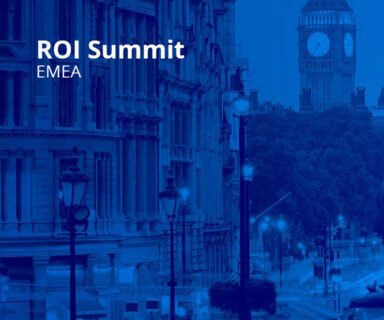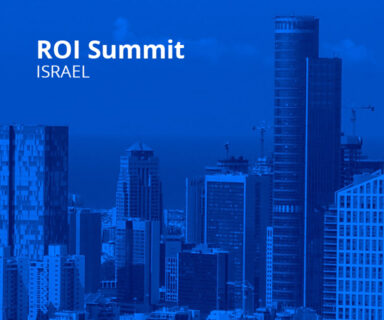An Interview with Achim Karpf, CEO of NetPress – the Content Marketing Agency
 In this series we’ll be giving in-depth interviews with regional marketers on the current state of B2B IT marketing in countries around the world. This series is meant to provide regional background understanding of unfamiliar markets that you, as a marketer, might be purchasing or working within.
In this series we’ll be giving in-depth interviews with regional marketers on the current state of B2B IT marketing in countries around the world. This series is meant to provide regional background understanding of unfamiliar markets that you, as a marketer, might be purchasing or working within.
In today’s blog we’ll be talking with Achim Karpf, CEO for NetPress – the Content Marketing Agency, located in Munich, Germany. With 20+ years of B2B IT marketing experience to help companies like Micron or Dell maximize the effectiveness of their content marketing activities, his specialty is helping international companies launch successfully in new markets across DACH and Europe by tailoring content and communications to the needs and preferences of local audiences.
Why do you work with TechTarget?
At NetPress, content marketing is more than just a business – it’s our passion. It’s also the best route to potential customers. Opinion-forming communication is about winning customers and retaining them at a fundamental, rational and emotional level. You secure long-term success, and we integrate our mission and values into every aspect of our business and interact across every communications channel. To work with TechTarget makes the difference. We amplify the impact of our customers’ communication, understand the preferences of the people who consume it, and never get distracted from taking care of the essentials. It’s all about creating impact efficiently – and you won’t find another platform or partner more capable of doing exactly that.
Can you give an outlook on the current market landscape? What is going on in the market right now?
Germany is one of the biggest markets in Europe and offers huge potential for US and UK companies that are willing to invest in a local presence here. However, the biggest mistake any US or UK B2B company can make when entering the German market, short of not engaging in content marketing at all, is to simply translate their US-style content marketing strategy into German, or worse, to only reuse English-language assets. Both of these approaches have a higher likelihood of failure. Content and the way it is distributed must be specific to German audiences, and must be created and delivered according to their preferences at every stage in the buying cycle. To succeed with content marketing in Germany, you need to understand what makes these guys tick, and how to adjust your strategy to meet their expectations. Relevance for the target audience is key. Only then will the resonance you achieve justify the investments required.
And how has German publishing changed over the last 5 years? Is content marketing a new hype?
In the US, content marketing has become a standard component of the marketing mix in many sectors. But it’s still a pretty recent phenomenon. The term ‘content marketing’ was first used in the US in 2001, but it wasn’t until 2006 that the idea started to take hold in Germany. At that point, German content marketing was fairly primitive: it consisted of basic lead generation by offering white papers and case studies to prospects via a gated download process. Not only that, the content on offer, at least when produced by foreign businesses entering the German market, was either English language only, or a simple translation of English language material. Identifying and addressing the needs of specific local target audiences with tailored content? That wasn’t on the agenda back then.
Currently, things look very different. In the US, many companies are investing serious money in sophisticated content marketing strategies that address multiple target audiences with highly relevant content in a variety of formats, distributed across a plethora of online and offline channels. The German market is moving in the same direction, but is still a couple of years behind what is happening in the USA (although the level of content marketing activities varies greatly by industry, with technology firms leading the way).
How does German culture affect marketing spend?
US businesses have a wealth of online and offline communication channels to choose from, all of which are used regularly by a large proportion of buyers. These businesses create and execute detailed strategies that deliver tailored content to the right audience, via the right channel, at the right time in the buying cycle. Most German companies do not have this kind of strategy, choosing instead to pump out content on various channels based on gut feel, because ‘doing something is better than doing nothing’.
This gives US or UK businesses with practical experience in successful content marketing a potentially big advantage when entering the German market. However, there is a reason why the German market lags behind the US and the UK – executing an effective German content marketing strategy is genuinely much more difficult, because German buyers are very specific.
German B2B buyers are generally conservative and risk averse, which often translates into a much longer purchasing process than US or UK vendors may be used to. Therefore these companies need to produce a higher volume of more factual content, because German buyers need more time to consume it all and feed their insights into the decision making process.
Have the latest threats to the market changed B2B IT buying for 2016 at all?
Germany is the largest economy in the European Union (EU) and the fourth largest in the world after the USA, China and Japan. The German economy is characterized by great innovations and has a strong focus on exports, both of which drive competitiveness and global networking.
Its future lies in Industry 4.0. But the German “Mittelstand” (small and medium-sized companies) has not yet fully adopted the „digital revolution“ and needs to improve its competitiveness regarding the digital transformation. Planned investments in solutions and infrastucture however will drive IT expenses.
What are the current IT Priorities in the market?
Following Gartner’s IT priority survey we are seeing 4 organizational tendencies:
- BI/ Analytics
- ERP
- Mobile
- Digitalization/Digital Marketing
On a global level, big data and analytics as well as cloud are currently attracting the highest amount of enterprise IT spending, whereas infrastructure and data center spending still remains at a high level. For German organizations however, BI and analytics is at the forefront of their strategic planning, closely followed by ERP.
In Germany, digitalization is strongly driven by an approach that focuses on cost reduction. Although this process will change the way things are done, the disruption of traditional business models is not a central goal. What’s also high on the agenda: German CIOs are focusing on mobile technology, which will finally result in the modernization of client-facing business applications.
To understand how TechTarget can help you achieve more success in the German market, please reach out to us today.




